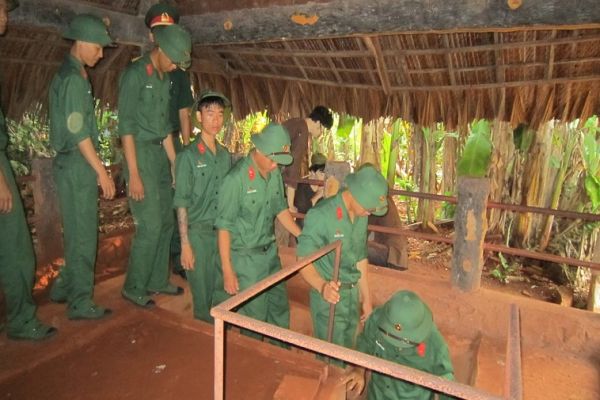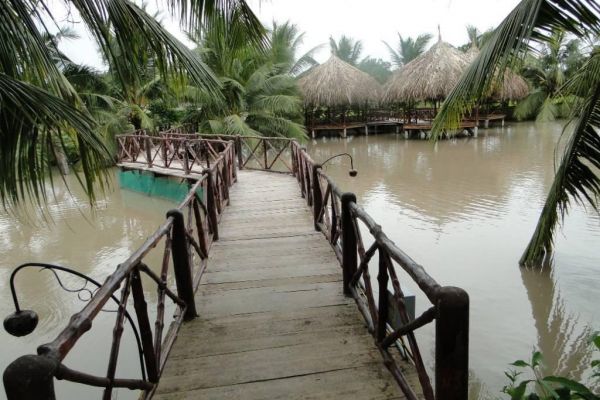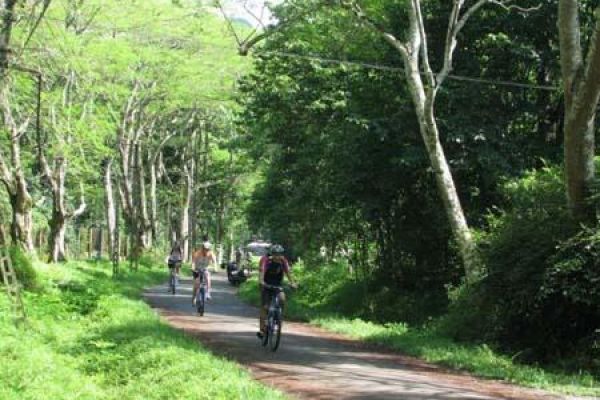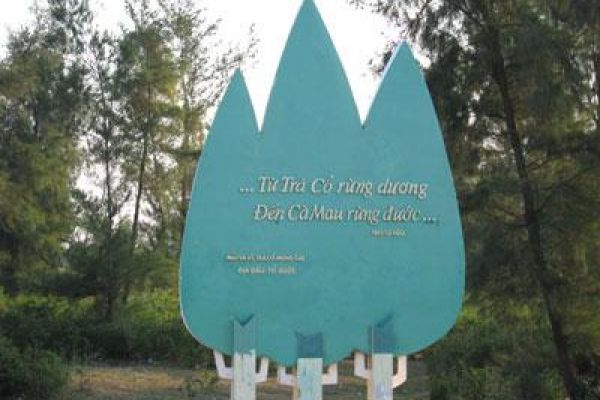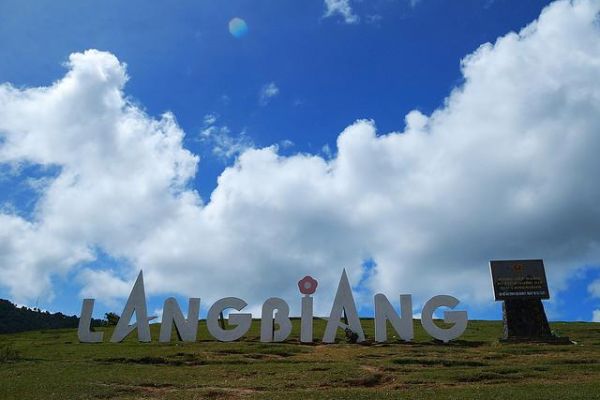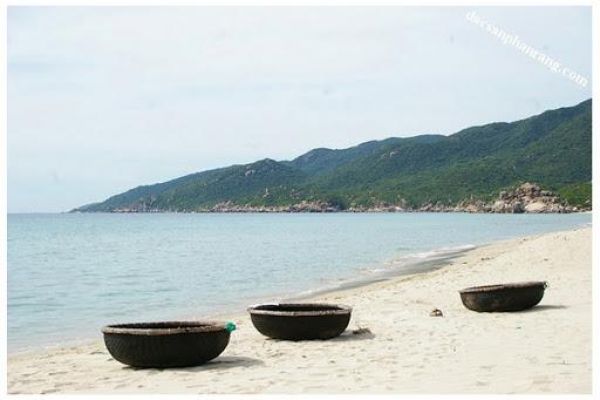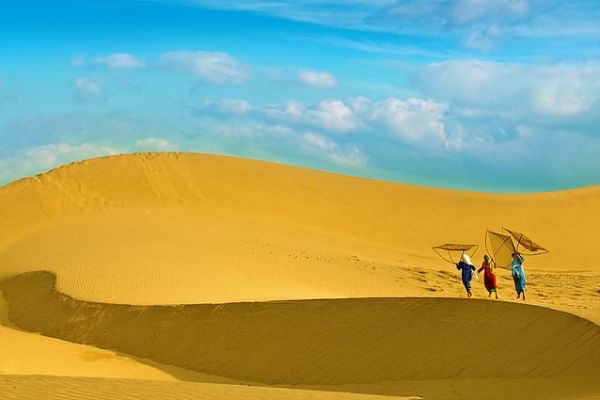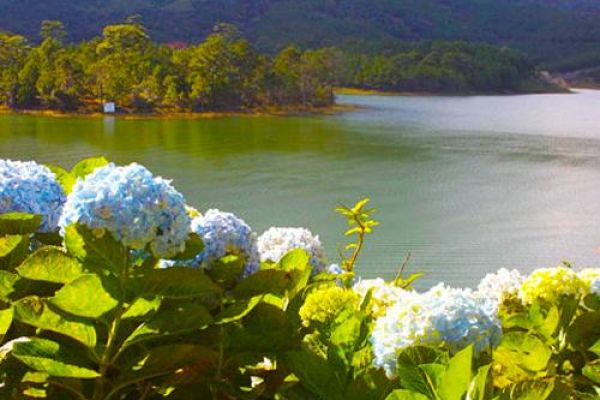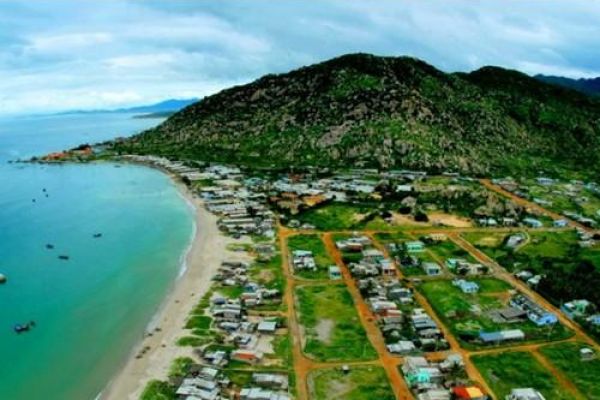Ha Long Bay

Ha Long Bay has an area of 1,553 square kilometers, including 1,969 isles, most of which are limestone. The world heritage site recognized by UNESCO has an area of 434 square kilometers, including 788 isles with a special value on culture, aesthetics, geology, biology, and economy.
On the bay, there are many isles, caves, beaches and beautiful landscapes, which is a great advantage to develop attractive forms of tourism. The most attractive caves are Thien Cung, Dau Go, Sung Sot, Trinh Nu, Tam Cung, etc.
Bai Chay

Bai Chay is a large and beautiful beach being adjacent to Ha Long Bay. Its sand is more than 500 meters in length and 100 meters in width. In the early morning or late afternoon, thousands of people come here to swim, which make the beach animated.
There are many legends associated with the name Bai Chay. According to an ancient legend, when the fleet carrying food for the Yuan-Mongolian invaders led by Truong Van Ho came Vietnam, they was defeated by the Vietnamese troops and local people under the leadership of Tran Khanh Du. Many enemy boats were burned and the northeast wind blew the fire to the west coast of Cua Luc then burned dry forests there. The area is called Bai Chay today.
Yen Tu Mountain

Yen Tu Mountain is a high mountain in Dong Trieu range in the northern Vietnam. The moutain belongs to Thuong Yen Cong commune, Uong Bi city, Quang Ninh province. Being dubbed “ancestral land of Vietnam Buddhism”, Yen Tu moutain preserves many historic monuments.
The top of the mountain is often covered with clouds so formerly, it was called Bach Van mountain (“white cloud” mountain). The total length of the road to the top of Mountain is about 6,000 meters. Therefore, you will have to spend 6 hours walking continuously through thousands of stone steps.
Nowadays, the way to Yen Tu is not as hard as it was thanks to the cable car system 1 completed in 2002 and th cable car system 2 put into operation in 2008.
Yen Tu has become the center of Buddhism since King Tran Nhan Tong gave up the throne to started leading a religious life and established Truc Lam Yen Tu Zen. King Tran Nhan Tong has become the first progenitor with the religious name Dieu Ngu Giac Hoang Tran Nhan Tong (1258-1308).
He ordered building hundreds of constructions on Yen Tu Mountain for leading a religious life, and preaching. After his death, Phap Loa Dong Kien Cuong (1284 - 1330) was the second progenitor of Truc Lam Zen.
During 19 years of religious life, Tran Nhan Tong compiled a set of book "Thach that ngon ngu" and ordered the building of 800 pagodas, shrines and towers with thousands of valuable statues.
Tuan Chau island

Tuan Chau island is located in the southwest of Ha Long City. Tuan Chau Island is the only schist island of 1,969 islands located in the connection of the world natural heritage. The island has an area of approximately 400 hectares, endowded with stunning natural landscapes.
It's featured with 2-square kilometer green pine forest, white sand beach stretching 6 kilometers. These all features make Tuan Chau Island an ideal place for visiting and relaxing.
Besides the attractive and mysterious beauty of natural landscapes, Tuan Chua is also an archaeological site of Halong Cultures in late-Neolithic period with a lot of stone tools found such as ware table, stone axes, piece of pottery.
Before 1997, Tuan Chau was a poor island with an area of 250 hectares, belonging to Ha Long city. The local people on the island mainly earn their living by fishing with rudimental instrumments. There were no electricity, no water, no market on the island.
Especially the traffic was separated from the mainland, making their material and spiritual culture of the local peoples on this island had even more difficulties.
Since 1998, the local people’s lives on Tuan Chau island began to improve when Au Lac Company invested to build a road with the length of 2,145 meters and the width of 15 meters connecting the island with the National Highway 18A, opened a leisure center with many famous constructions. Since then, the name of Dao Tuan Chau Island has been known and became the place to oganize the important national and international events.
Tourists can play on famous Tra Co beach sloping gently to the sea with smooth white sand. In addition, they can take part in a lot of funny activities and water sports such as beach volleyball, windsurfing, boating, skiing motor, etc.
Especially, tourists will have a chance to enjoy delicious dishes in Vietnam cuisine garden. The garden was built in unique style, imitating the traditional Vietnamese imperial palace architecture in 17th and 18th century.
Co To island

Co To island attracts tourists by pristine beaches with white sand and blue water. There are large Co To island and small Co To island, Thanh Lam island, Tran island and a lot of other isles here. Besides swimming, tourists can visit natural forest, lighthouse, pier, fishing villages, and natural rock, etc.
Cua Van fishing village

Cua Van fishing village lies in a calm sea, surrounded by mountains.Located in the heart of Ha Long Bay, Cua Van fishing village has been a tourist attraction for domestic and foreign tourists.
Coming to the village, touists have a chance to contemplate immersed in a tranquil space and contemplate charming beauty of nature, as well as learn about cultural life of fishmen.
Cua Van fishing village has an origin from two old fishing villages which are Giang Vo and Truc Vong. The village has 176 families, totaling more than 750 people. Most of them earn their living by fishing.
When the night falls, visitors can go sailing around the village and go fishing for squid with fishmen.
Translated by Nguyen Quynh

